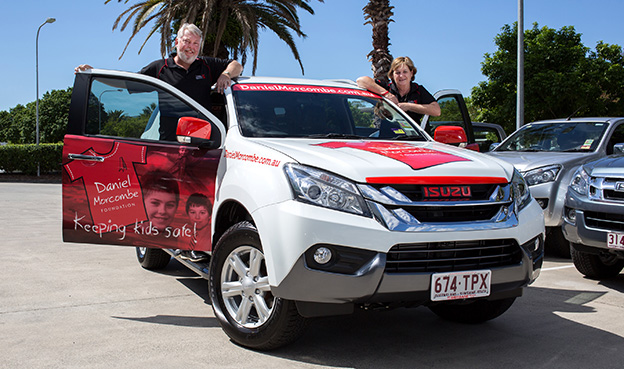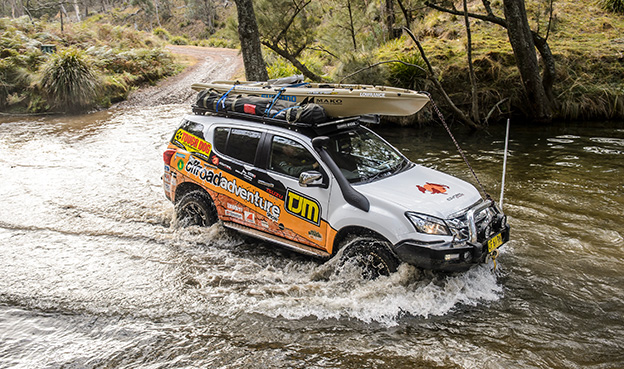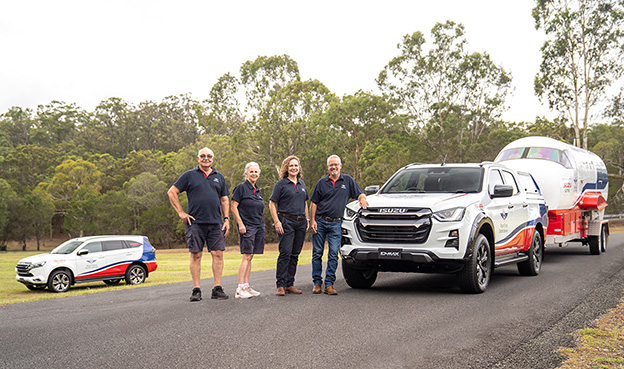

It was one hell of a way to put the D-MAX through its paces! A drive of more than 5,000km from the showroom floor in Melbourne to the cobalt-blue waters of the Indian Ocean and Ningaloo Reef near Exmouth in Western Australia. That was the assignment for our Channel 7 TV show Hook, Line and Sinker as we fished and filmed our way from one side of the country to the other. Towing a boat across Australia is certainly more rigorous than your average test drive. But over the the month the trip took us to complete, we got to know the ute and its strengths better than most.
TAILOR, GROPER AND GREY NOMADS
The route took us from suburban Melbourne to South Australia’s Port Augusta ‘where the outback meets the sea’. We fished a couple of favourite spots on the Eyre Peninsula and managed to pull in a few salmon, King George whiting and even a feed of razorfish. Then it was time to settle in for the long cruise across the Nullarbor. Highlights along the way included the odd camel, a few road trains and every kind of mobile-housing device ever invented, driven by the ever-smiling, ever-waving army of grey nomads.
OVER THE MONTH THE TRIP TOOK US TO COMPLETE, WE GOT TO KNOW THE UTE AND ITS STRENGTHS BETTER THAN MOST.


Once in Perth, we fished up the Western Australian coast, reeling in everything from dhufish and baldchin groper at Jurian Bay and a massive 5kg tailor from the dangerous bit of the bar at Kalbarri. Yes, the fishing was good, but we were always mindful of getting to Exmouth—a place that’s fast being added to the bucket list of fishermen around the world. As we racked up the kilometres it became clear our D-MAX was starting to enjoy the trip. It also became obvious to us how good the engine’s fuel economy is. It truly is a great engine, and one of the most impressive features of the D-MAX is its ability to deliver enough torque to haul a 6.7m boat at highway speeds at very low revs. It’s comfortable, quiet and frugal on the flats, but muscular and willing when faced with a hill.


HUMPBACKS, SAILFISH AND MARLIN
We arrived at Exmouth late in the afternoon and settled in. Our first impressions were that there’s not much to the place—just a few houses in the middle of desert. But it’s clear the mining boom is having an effect, with flash new homes under construction along with a multimillion-dollar canal development. The next morning we made a quick trip to the local tackle shop and then drove around Exmouth Gulf to the westernmost boat ramp. There we launched the Bar Crusher and within moments we were on the seaward side of Ningaloo Reef, where we were welcomed by a pod of humpback whales! Our target for the day was sailfish. We started trolling a few baits and hooked a big one in just 10 minutes. Unbelievable! To say we were unprepared and slightly shocked is an understatement and we quickly snapped the line. Four hours passed before we got another bite, when a pack of hungry sailfish came up and whacked our lures. Once again we hooked one only to lose it on its first jump. But by that time the ‘afternoon bite’ had kicked off and we didn’t have to wait long for another crack at one of these whoppers. This time the hook stuck and, after a fantastic aerial display, we had our very first sailfish at the side of the boat. How big? Seven-foot long, that’s how big. Over the next few days we used a mix of light tackle for sailfish and marlin, mixed in with some sensational sport fishing in the crystal-clear waters of Ningaloo Reef Lagoon. Temperatures were in the mid to high 20s, the whales were jumping, the dugongs were foraging and the odd tiger shark swam past to keep things interesting. Add to that some of the best fishing Australia has to offer, and there’s no doubt Exmouth really does live up to the hype.





